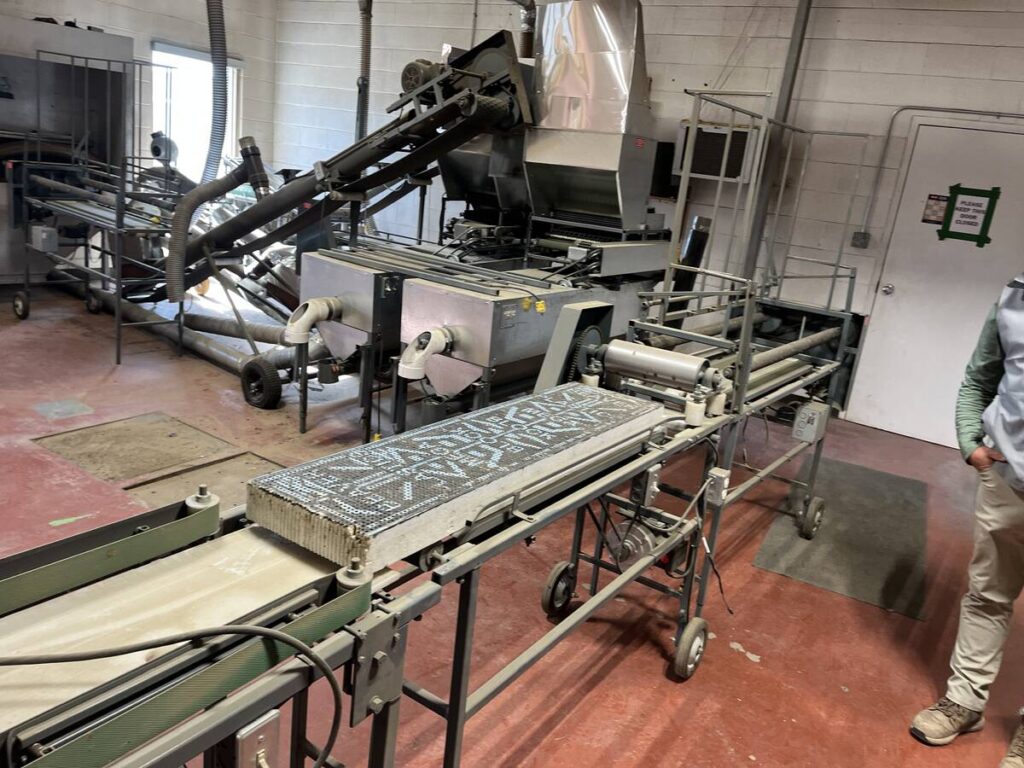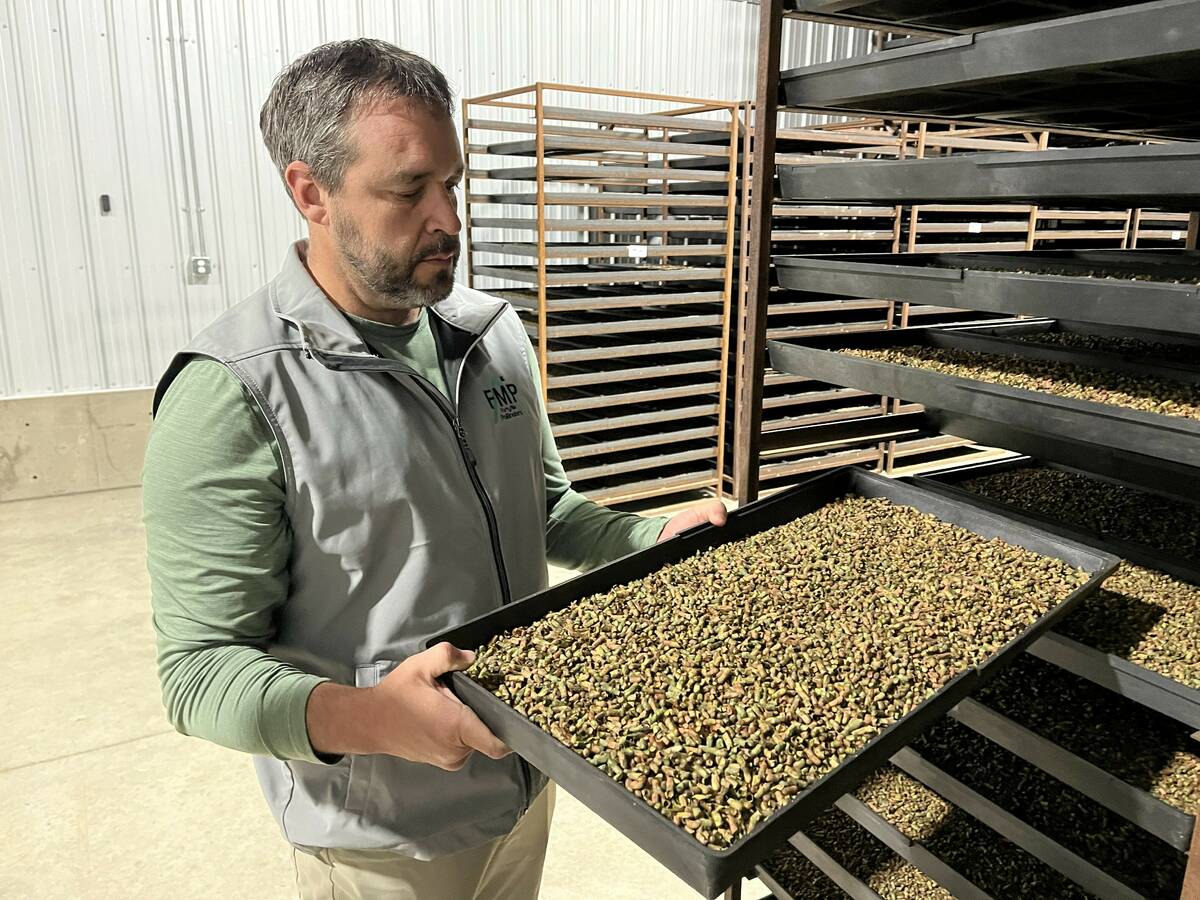Alberta pollination service buzzes into high gear

Leafcutters are the bees knees when it comes to helping increase yields with a friendly push from Mother Nature.
June is fast approaching, and one company based in Bow Island, Alta., provides this push as it heads into its busy season. Forty Mile Pollinators (FMP) is heading into the fields amid the intricate process of managing leafcutter bee colonies for pollination services.
The company fields around 200 million bees at times, significantly enhancing pollination efficiency.
Read Also


Versatile Chinese barbecue pork has a variety of uses
Chinese barbecue pork, or char siu, is a delicious, authentic Cantonese roasted meat that has a salty/sweet flavour along with a hint of spice
Cory Nelson is one of the four farmers who founded the firm. He said he’s read that alfalfa seed production would be somewhere around 100 to 150 pounds per acre if left to natural pollinators, whereas the growers he works with routinely report yields well over 1,000 lb.per acre.
“It could be 10 fold compared to natural pollinators,” said Nelson.
”The pollination that these provide, it’s what allows the system to work with the increased yields which creates a lot of jobs in the region.”
Each FMP nest block contains 3,400 holes, with bees using pheromones and colour schemes to locate their holes. Bees lay six eggs per hole, and the eggs hatch into larvae that spin cocoons. These cocoons are stored in winter and used in spring when crops such as alfalfa and seed canola are ready.
Co-ordination with farmers and agronomists is crucial for the precise timing needed for bee production, and FMP typically starts incubating bees 22 to 24 days before they are needed in the fields.
The company staggers its hatches with the amount of acres it services so that the later fields get bees that are just as fresh as the earliest ones. Trays of bees (typically 20,000) are brought to the field under refrigeration so thatthey don’t get too hot before their destination.
“We know exactly how many days after planting date that we need to start these, so that they are ready the moment the flowers are there,” said Nelson.
FMP provides bees for seed canola fields from Medicine Hat to Grassy Lake. They also do some alfalfa near Brooks.
Incubation is an art. It requires maintaining a constant temperature of 30 C. Even a few degrees higher can be lethal to developing bees. FMP uses advanced cooling systems to maintain optimal temperatures for incubation.
It also faces challenges from parasitic bugs (paranalis) that eat bee eggs. They are managed through sanitation and temperature control.
In the incubation chambers, FMP captures parasites that hatch first using black lights on the floors and water trays. They cannot be eliminated but can be managed and minimized using various control measures, said Job Swarey, operations manager and a partner in the firm.
He said the design of the nesting blocks is a critical piece of that puzzle. They’re designed with a quilting on the back that acts as a sort of spider web against the parasites.
“The bees are coming out from the front all the time, and the parasites are coming in from the back and wreaking havoc, so the quilting provides protection from that,” said Swarey.
GPS tags are used to manage the field shelters. A spot in the field is sprayed for each shelter and a crew comes in to build them. The shelters are prefabricated into a few simple parts, and two people can put one up in about five minutes.
A keen observer may note there are different colours of shelters, and that’s related to temperature control.
A dark shelter, such as black, will be warmer inside, which encourages hatching to continue, while a blue or green shelter will stay cooler. The colour depends on time of the season and average temperatures in the area where the shelters are located.
Another big part of the business is managing the relationship with farmer customers.
“Co-ordination is a very big deal,” said Nelson.
“From a farmer standpoint, he’s planting that canola, he’s got his operations to do. He has to spray and he doesn’t want those tents in his way.”
He said that means working around farmers’ field operations, as well as the weather. It means a lot of the work winds up happening when there’s time to do it.
“You are co-ordinating all these tight little windows.”
June is a busy time, but the bee business is a year round endeavour.
Every fall, the bee blocks are brought in to dry out and temperature controlled to mitigate parasites. Once the blocks get to the correct humidity, the bees are punched out and stored properly in totes.


FMP has two punching-machine lines that fire up in November after the nests are dried. Stack feeders are synchronized going through the roller to loosen up the cells, which are slightly tapered so the cocoons are not squished. The whole process has them coming out in a long stem of six or seven cocoons, which are then broken up and cleaned.
“It’s a very, very dirty job. Those nests collect a lot of dust,” said Swarey.
FMP has dust-collection systems to protect employees and fight fungi, he added.
Temperature control is also a big management issue. FMP uses heat pumps to heat and cool the buildings properly for bee maintenance at about 6 to 8 C.
“If you stored your bees at room temperature all winter long, you’d have problems,” said Swarey.
Lower temperatures ensure the bees don’t break dormancy. The operation can be controlled remotely, with a back-up system and alarms if temperature issues do occur.
All this ensure that, come spring, the bees will spring to life and start their busy season.
“They chew their way out of the cocoon. As soon as you put them in the field, they are flying looking to do their job. You will see them go straight from the tray; it’s automatic,” said Swarey.
Source: producer.com


